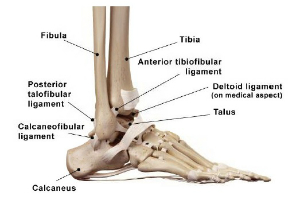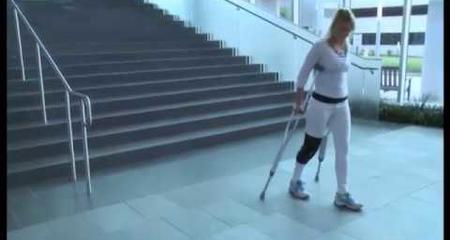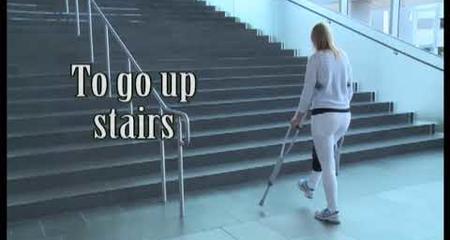 Ankle sprains are the most common orthopaedic injury, accounting for 40 percent of all athletic injuries. It is thought that there are about 25,000 ankle sprains per day in the US. Ankle sprains are caused by a forceful rolling or twisting of the ankle during activities such as sports, tripping on uneven ground, or falls. These injuries cause the ligaments of the ankle to stretch or tear. Injury to the ligaments on the outer (lateral) aspect of the ankle is more common; however, injury to the inner (medial) aspect can also occur and is more severe.
Ankle sprains are the most common orthopaedic injury, accounting for 40 percent of all athletic injuries. It is thought that there are about 25,000 ankle sprains per day in the US. Ankle sprains are caused by a forceful rolling or twisting of the ankle during activities such as sports, tripping on uneven ground, or falls. These injuries cause the ligaments of the ankle to stretch or tear. Injury to the ligaments on the outer (lateral) aspect of the ankle is more common; however, injury to the inner (medial) aspect can also occur and is more severe.
Sprains are graded as mild, moderate, or severe. The grade of a sprain depends on the degree of damage to the ligament that has occurred. High ankle sprains, which involve the ligaments connecting the tibia and fibula bones in your lower leg, take longer to heal and usually require the use of crutches. Sprains may also occur with an avulsion fracture, in which the stretched ligament or joint capsule pulls a piece of bone away from its point of attachment.
Symptoms of a sprain may include pain, swelling and bruising around the ankle. Feelings of instability while walking or giving way of the ankle can also occur. Up to 54 percent of people who sprain an ankle experience another sprain later in life. Proper treatment and rehabilitation can help reduce this risk.
Ankle Sprain Treatment
Most ankle sprains heal without surgery, but require rest and therapy. It may take several months for your ankle to improve. Without proper treatment and rehabilitation, severe sprains can weaken your ankle and increase the risk of re-injuring it. Recurrent ankle sprains can lead to ongoing problems like chronic ankle pain, arthritis and chronic instability.
The initial treatment will depend on the severity of the sprain and may include:
- Rest and ice. Decreasing or even stopping the activities that make the pain worse is the first step in reducing the pain. Also, icing the ankle for 10 to 15 minutes out of every hour for the first 72 hours after the sprain can help reduce inflammation and swelling.
- Compression and elevation. Use of a compressive wrap or stocking along with elevating (raising) your leg while you are sitting or lying down will help control the swelling.
- Bracing and immobilization. The use of a brace may be recommended at first to promote healing and avoid re-injury to the ankle.
- Non-steroidal anti-inflammatory drugs (NSAIDS). Medicines such as ibuprofin (Motrin) or naproxen reduce pain and inflammation. They are used during the acute phase of treatment.
- Physical therapy. A physical therapy program will use hands-on techniques and exercises to improve ankle mobility, strength and balance.
Imaging, such as X-rays, are indicated if you are unable to bear weight right after the injury or if there is pain over bony areas. Typically an MRI is not needed in the early treatment phase, but may be done for patients who do not improve after three to four months of treatment. Studies have shown MRIs do not change the early course of treatment.
Likewise, surgery is only considered if instability continues after a four- to six-month course of failed treatment.
Virtual Visits Are Available
Safe and convenient virtual visits by video let you get the care you need via a mobile device, tablet or computer wherever you are. We'll assess your condition and develop a treatment plan right away. To schedule a virtual visit, call 414-777-7700.
More to Explore





